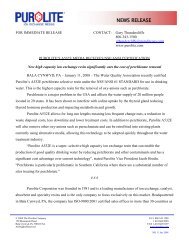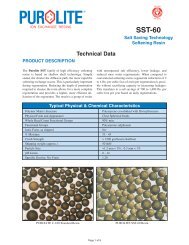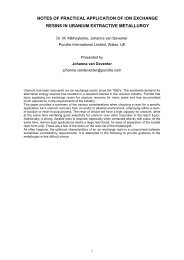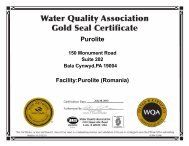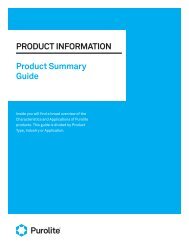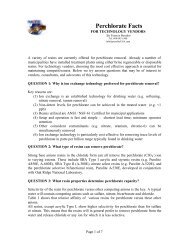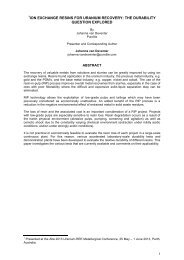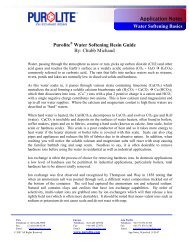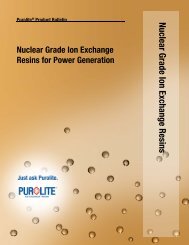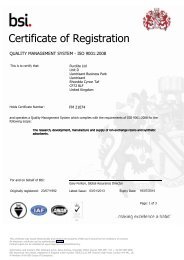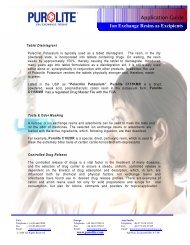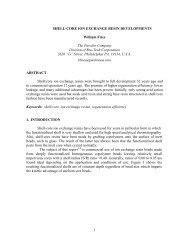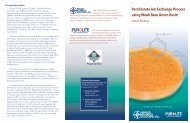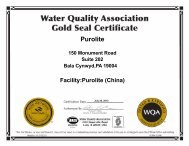Cane Sugar Refining - Purolite
Cane Sugar Refining - Purolite
Cane Sugar Refining - Purolite
You also want an ePaper? Increase the reach of your titles
YUMPU automatically turns print PDFs into web optimized ePapers that Google loves.
<strong>Cane</strong> <strong>Sugar</strong> <strong>Refining</strong> with Ion Exchange Resins<br />
10<br />
environment. Their osmotic stability results in a very long life time and they can withstand<br />
very aggressive conditions (temperature, pH, concentration, and oxidant media).<br />
They are very effective in polishing steps and can be considered as an alternative to powdered<br />
activated carbon.<br />
Van der Waals forces effect: These are attractive forces between chemical groups in<br />
contact. They result from a temporary dipole formation. Van der Waals force bonding is<br />
the main adsorption mechanism taking place on the surface of activated carbon<br />
Ion exchange: The colorants exhibit mostly an anionic behavior at alkaline pH and<br />
thereby they can be exchanged against the mobile chloride ions. This results in an ionic<br />
bond (electrostatic attraction) between the resins positively charged ionic group and the<br />
negatively charged part of the colorant. However this mechanism is not the predominant<br />
one in color removal.<br />
Hydrogen bonds: It is an electrostatic attraction that occurs between molecules in which<br />
hydrogen is in a covalent bond with a highly electronegative element (oxygen or nitrogen).<br />
The main mechanism for granular activated carbon adsorption is the Van der Waals<br />
(or London) force binding. Ion exchange resin decolorization process is a combination of<br />
several phenomena (Fig 1) such as ion exchange, hydrogen bonds and London forces.<br />
Figure 1. Ion Exchange Resin Adsorption Mechanism<br />
Van der Waals<br />
O<br />
O<br />
O<br />
C<br />
O -<br />
C 3<br />
IONIC<br />
N +<br />
C 2<br />
O O<br />
C 2<br />
NH 2<br />
Note: Subscripts after C refer to number of H atoms not shown.<br />
C 3<br />
C 3<br />
C 3<br />
C 2<br />
O<br />
C 3<br />
C 2<br />
C 2<br />
C<br />
N +<br />
O -<br />
C 3<br />
C 3<br />
C 2<br />
C 2<br />
O<br />
C 3<br />
C<br />
C 2<br />
C 2<br />
O -<br />
N +<br />
C 3<br />
C 3<br />
C 2<br />
C 2



